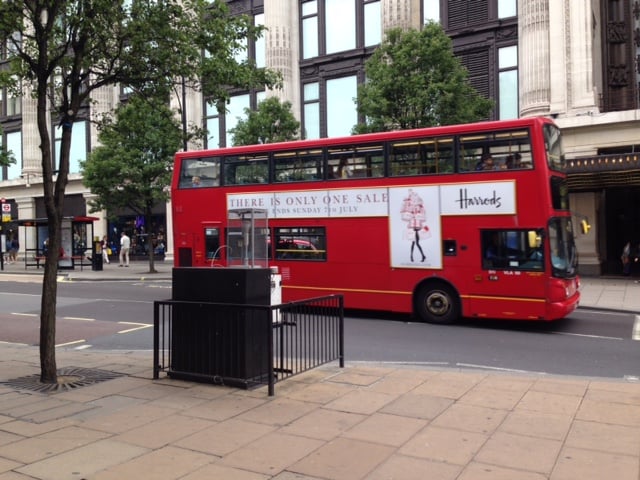Nitrogen dioxide (NO2) hourly legal limit for the whole of 2017 has been breached in London in just five days
World Health Organisation guideline is for no human exposure to NO2 over 200 micrograms per cubic metre (ug/m3) measured over one hour. The EU legal limit, also in UK law, is 18 hours in a calendar year
Brixton Road’s monitor was first to report 19 exceedances at 9pm on Thursday 5 January (and 21 by 11pm). Hourly NO2 concentrations reached an incredible 347.7 ug/m3 in Brixton Road at 9pm.
Brixton Road’s staggering 20 hourly exceedances in a 24-hour period (7am on Thursday to 6am on Friday 6 January) is close to the world record it already shares with Putney High Street of 24 hourly exceedances in a single day.
Brompton Road, Neasden Lane, Putney High Street and the Strand have reported six, seven, 11 and one exceedances respectively. On Thursday, hourly NO2 concentrations in Brompton Road and Neasden Lane reached 375.2 ug/m3 at 8pm and 338.2 ug/m3 at 11pm respectively indicating that the air pollution episode was widespread.
Further exceedances are expected on Friday.
Quote
Simon Birkett, Founder and Director of Clean Air in London, said:
“London’s air pollution is worse this year than last, taking just five instead of eight days to breach the nitrogen dioxide (NO2) hourly limit value for the whole of 2017. This binding legal limit has been in legislation since 1999 to be met by January 2010.
“Sadiq Khan knows how to reduce NO2 – he’s reduced annual mean concentrations in Oxford Street by 36% between 2015 and 2016.
“So there is no excuse for him letting annual mean NO2 increase in Brompton Road and Putney High Street in 2016 – even after those sites hit headlines for becoming the first to report official legal breaches for 2016 on 8 January. Why was no action taken there last year? What action is planned for them this year?
“The World Health Organisation (WHO) says there should be no human exposure to more than 200 micrograms per cubic metre (ug/m3) in any hour. But many places in London have dozens or hundreds of such exceedances every year. Putney High Street suffered a lung choking 1,151 exceedances in 2016.
“With diesel vehicles responsible for 90-95% of NO2 from vehicle exhaust, the only way to achieve full compliance with WHO guidelines is to ban diesel from the most polluted places as four other world cities have pledged. Sadiq should match them and go further by pledging to eliminate the burning of fossil fuels throughout London by 2025 starting with diesel by January 2020. It’ll be no harder than banning coal burning 60 years ago.
“When conditions are as bad as they were on Thursday, when Brixton Road suffered 20 hours of exceedances in a single 24-hour period, bus services should be suspended, drivers should be advised not to drive and pedestrians should be warned to avoid the area. We also need to ban alfresco dining and the use of outdoor tables for cafes wherever and whenever the WHO guideline for hourly exposure could be breached. Emergency measures and action are needed.
“The Government must play its part too by: reforming vehicle excise duty to ease Emissions Based Road Charging; funding targeted diesel scrappage schemes; and introducing a new Clean Air Act to give the Mayor much-needed additional powers e.g. over emissions from construction, river transport, restaurant cooking and local generation including the unnecessary use of standby diesel generators.
“Last but not least, special thanks to the London Air Quality Network for diligently reporting these results.”
ENDS
Notes
1. Legal breaches in 2016 vs 2015
cal-343-no2-hourly-exceedances-in-2016_unratified
2. Brixton Road, Lambeth
3. Brompton Road, Kensington and Chelsea
4. Marylebone Road, Westminster
5. Neasden Lane, Brent
6. Oxford Street, Westminster
7. Putney High Street, Wandsworth
8. Strand, Westminster
9. Walbrook Wharf, City of London
10. World’s highest concentrations of nitrogen dioxide
http://www.londonair.org.uk/london/asp/news.asp?NewsId=OxfordStHighNO2&StartIndex=31
11. Dementia










